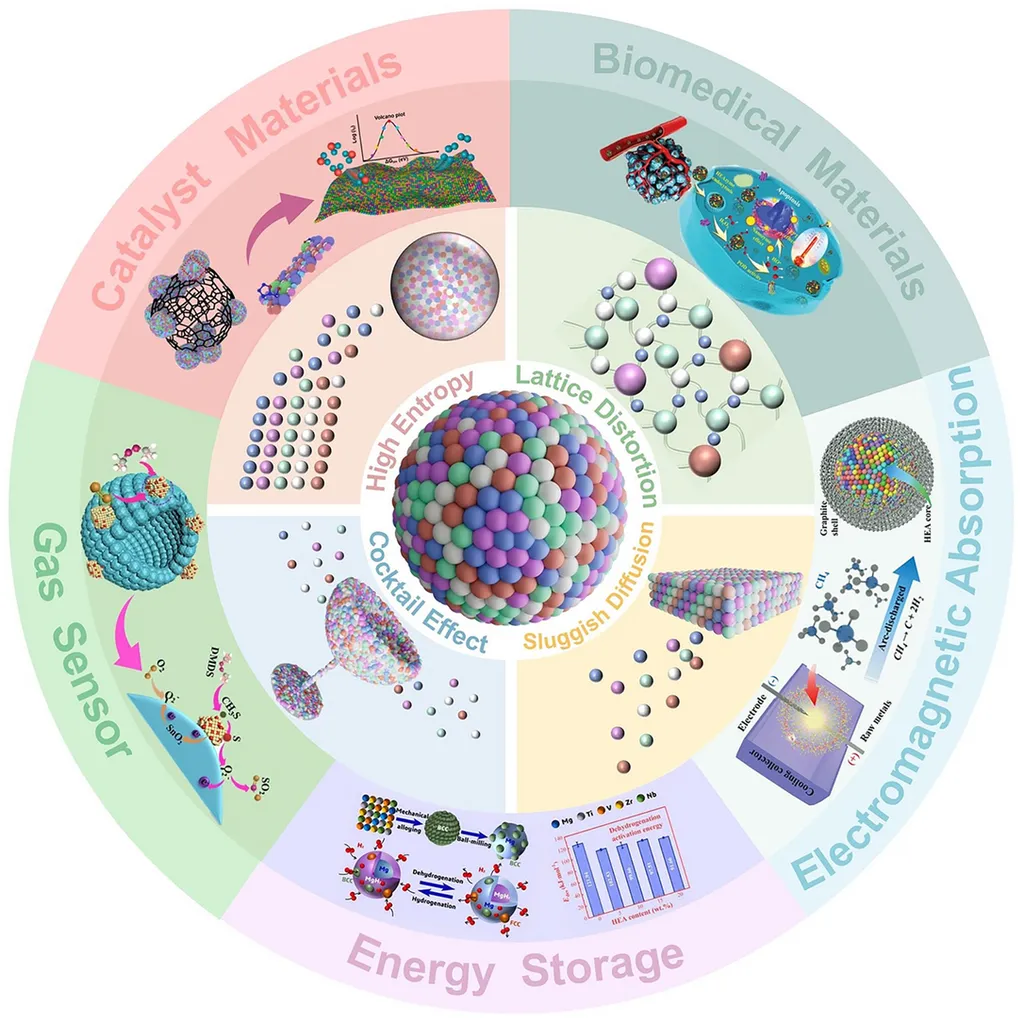In a significant stride towards advancing biomaterials for medical applications, researchers have unveiled how annealing treatment can enhance the properties of a novel high-entropy alloy (HEA). The study, led by Yan-Fei Xu from the College of Mechanical & Electrical Engineering at Changsha University in China, explores the impact of annealing on the microstructure, wear resistance, and corrosion properties of a TiZrMoSn₀.₈Hf₀.₂ high-entropy alloy. Published in the journal *Materials Research Express*, the research offers promising insights for the development of durable and corrosion-resistant materials in the biomedical field.
High-entropy alloys, known for their unique properties and potential applications, have been a hot topic in materials science. Xu and his team prepared the as-cast alloy using a vacuum non-consumable arc melting furnace, followed by annealing treatments at temperatures ranging from 600 to 900 °C. The results were striking. “The annealing treatment refined the microstructure of the samples and led to the formation of the Mo₃Sn phase at 600 °C,” Xu explained. “This phase, although unstable at higher temperatures, significantly improved the alloy’s hardness and wear resistance.”
The study revealed that the alloy’s hardness and wear resistance were optimized after annealing at 600 °C, with the finest microstructure and the formation of the Mo₃Sn phase contributing to these enhancements. The wear mechanism of the alloy was primarily adhesive and abrasive wear, indicating its potential for applications requiring high durability and resistance to wear.
Moreover, the annealed samples exhibited superior corrosion resistance compared to the as-cast alloy. “The annealed samples showed more positive corrosion potential and lower corrosion current density, making them more resistant to corrosion in Ringer’s solution,” Xu noted. This finding is particularly relevant for biomedical applications, where materials must withstand harsh environments and maintain their integrity over time.
The implications of this research extend beyond the biomedical field. In industries such as energy, where materials are often subjected to extreme conditions, the development of high-entropy alloys with enhanced wear and corrosion resistance could lead to more durable and efficient components. For example, in the oil and gas sector, pipelines and drilling equipment could benefit from materials that resist wear and corrosion, reducing maintenance costs and improving safety.
As the demand for advanced materials continues to grow, research like Xu’s paves the way for innovative solutions. “Our findings highlight the potential of high-entropy alloys in various applications,” Xu said. “By understanding and controlling the microstructure and properties of these alloys, we can develop materials tailored to specific needs.”
The study not only advances our understanding of high-entropy alloys but also opens new avenues for their application in industries where durability and corrosion resistance are paramount. As researchers continue to explore the potential of these materials, the future of biomaterials and beyond looks increasingly promising.

